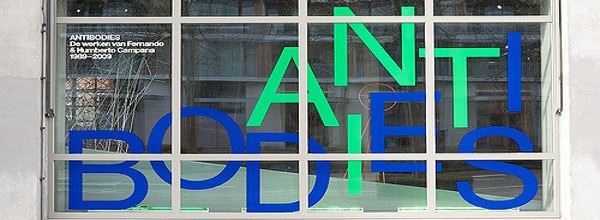If you’re hoping to reel in a positive interaction between a protein and an RNA sequence, try to catch a winner with a yeast three-hybrid assay.
What is yeast three-hybrid (Y3H)?
The Y3H system is based on the same principle as a yeast two-hybrid– namely, that the DNA binding domain and the transcription activation domain of a transcription factor can be split up and expressed separately, but still associate to form a functional transcriptional unit when they are brought into close physical proximity in vivo. The original Y2H takes advantage of this to measure protein-protein interactions, and the technique has also been modified for a number of other applications, e.g. measuring protein-DNA interactions (yeast one-hybrid) and measuring membrane-bound protein interactions (split ubiquitin yeast two-hybrid). But what about protein-RNA interactions?
That’s where the yeast three-hybrid assay comes in.
Y3H relies on the assembly of a multi-subunit transcriptional activator complex – like Y1H and Y2H. The difference is that in a Y3H experiment, this complex requires RNA–protein interaction to be able to form a functional transcriptional unit. This transcriptional activator complex then drives reporter gene expression (usually HIS3, a histidine biosynthesis gene, or LacZ, which encodes for bacterial enzyme ?-galactosidase), which gives phenotypic markers of positive RNA-protein interactions. This allows you to utilize a bottom-up approach that detects which proteins bind a given RNA sequence of interest.
Here’s what you’ll need.
The transcriptional activation complex consists of three hybrid molecules encoded by three different plasmids (see Figure 1):
1. The “hook”. A hybrid protein made up of an RNA binding protein (e.g. the bacteriophage coat protein, MS2) fused to a DNA binding domain (most commonly the DNA binding domain from the E. coli protein, LexA). The hook remains constant between experiments.
2. The “bait”. A synthetic RNA molecule composed of the two specific RNA targets for each of the RNA binding proteins. The section of RNA that is bound by your hook remains constant between experiments and is joined to your RNA region of interest (X). When both RNA binding sites are recognized by their cognate binding proteins, the RNA molecule functions as a linker between the DNA binding domain (LexA) and the activation domain (Gal4), which is encoded along with…
3. The “prey”. A fusion protein containing a second RNA binding protein (i.e., your protein of interest, Y) fused to the Gal4 activation domain. When X is bound by Y, the DNA binding domain and activation domain are brought together to form a functional transcriptional unit, driving downstream transcription of your reporter gene (commonly HIS3, or LacZ).
4. A number of controls. The controls try to eliminate background signal and ensure that the interactions you’re detecting are real. These include using positive and negative control “bait” plasmids, and careful selection and counter-selection to ensure that all components of the complex are required for the interaction.
Expert tip: Most Y3H experiments use a ADE2-mutant yeast strain, which allows you to check for RNA-dependent interactions. When levels of adenine in media are low, these yeast attempt to synthesise adenine but, due to a lack of ADE2 enzyme, they instead accumulate a red purine metabolite. This turns the colony partly or completely red. The ADE2 gene is included as an additional selection marker on the “bait” plasmid, allowing successful transformants to be discriminated based on uniformly white colony color in adenine dropout media.
As well as the plasmids to express your hybrid transcriptional subunits, you’ll need all the other reagents and equipment you would need for a standard Y2H, such as genetically modified yeast, selection markers, and yeast growth media. Check out our Overview of Yeast Two-Hybrid (Y2H) Screening for more details and some help on how to design your experiment.
How does it work?
Once you have all the necessary equipment, the yeast are transformed with each of the three plasmids and selected for robust expression using auxotrophic selection markers (usually tryptophan, uracil and leucine biosynthesis).
Positive yeast clones that have successfully integrated all three plasmids (a.k.a. triple transformants), are then used to screen your RNA of interest (X) against all of your proteins of interest (Y). Like other Y2H methods, this can be done using a candidate protein approach to test a few interacting pairs, or in a high-throughput format by using a screening library to identify novel binding partners.
Interactions between RNA X and Protein Y will allow the fused activation domain to bind the Gal4 promoter region upstream of your reporter gene and promote transcription. The diagram below shows what happens when there is a positive RNA-protein interaction between X and Y (a), and what happens when there isn’t (b).
Figure 1. Possible Y3H Results
Like any yeast hybrid assay, Y3H has some disadvantages.
- Y3H doesn’t provide any information about the functional consequences of an RNA-protein interaction. The technique can be adapted to measure the relative strength of an interaction (using histidine dropout media to detect increasing resistance to 3-AT, check out this Y1H article for more detail), but these data are qualitative.
- Some synthetic RNA molecules are toxic when expressed in yeast and have to be modified or discarded
- Candidate proteins that can bind directly to the LexA/MS2 fusion protein (a.k.a. “RNA-independent binding”) or endogenous yeast transcription factors that can bind Gal4 promoters can both generate a false-positive result (an estimated 95% of detected positive interactions are actually false).
Have you used a Y3H assay in your research? Has it helped you catch a big fish? Let us know in the comments.








